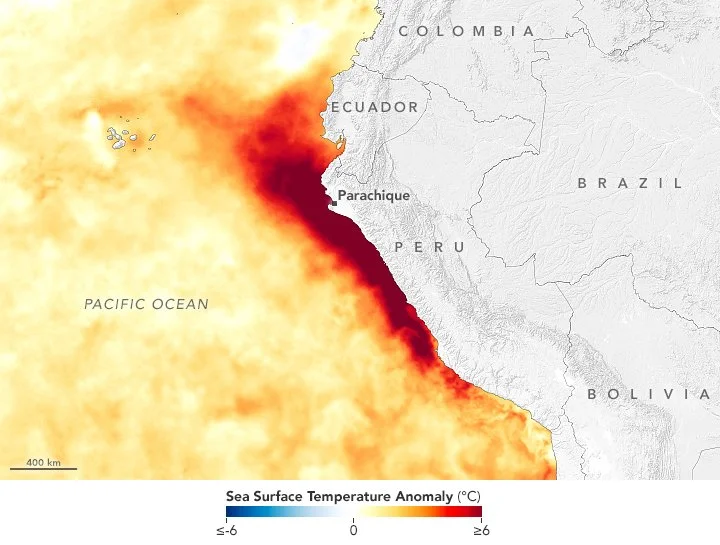Climate change path
While the world continues being impacted by climate change experiencing heat waves with record weather temperatures, floodings originated by heavy rains and severe draughts elsewhere ; people and governments, businesses, private and public organizations , society in general are urging for more action everyday. Eyes and wisdom to find the origin and identify solutions come from scientists and engineers that need to be mostly unified in their conclusions. This requires ample discussion among them since not only IPCC reports have a word to say. Resources needed to clarify the situation should be available. Would this be possible?
Said that, let’s review an abnormal climate event in many years that happened at the Pacific Ocean in the region along the northern coast of Peru during last March. Sea water temperature experienced an abnormal heating given place to the event. Technical description corresponds to a NASA report as follows.
“The unusually warm waters have played a role in energizing intense rainfall onshore, with northern Peru, Ecuador, and parts of western Brazil receiving frequent heavy rains since mid-March. The rains became especially intense after the rising ocean temperatures helped fuel Tropical Cyclone Yaku, which pumped even more rain into the normally dry region. The storm, the first tropical cyclone to hit the area in decades, was disorganized and lacked an eye, but it dropped record amounts of rain in semi-arid northern Peru on March 9, 2023. Pacasmayo received 13.7 centimeters of rain in a 24-hour period, and Chiclayo saw 8.7 centimeters.
The warm sea surface temperatures coincided with the part of the year when Peru normally sees its highest water temperatures offshore, explained René Garreaud, an environmental scientist at the University of Chile. This pushed sea surface temperatures above 27°C (80°F), speeding evaporation, making the air more humid, and fueling the formation of tall convective clouds that produce downpours and thunderstorms. The situation is similar to 2017, the last time a coastal El Niño flooded the area with rain.”
(1) https://earthobservatory.nasa.gov/images/151183/warming-water-and-downpours-in-peru
